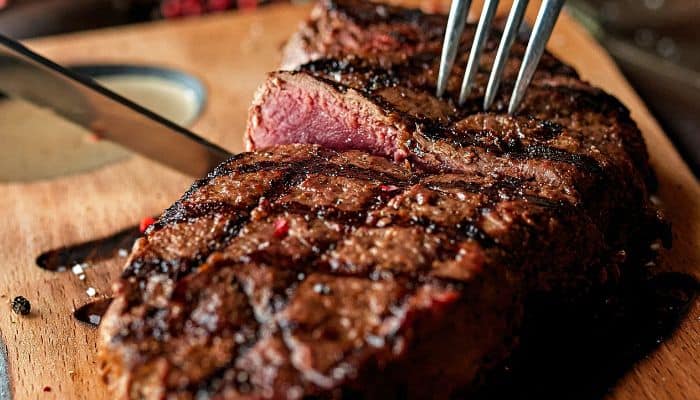Steak gets a bad reputation. It’s often pinned as one of the worst types of meat you can put in your body. This is because it’s high in cholesterol, which can increase your risk of heart disease. However, there are two main problems with this line of thinking. Cholesterol is not inherently bad for you—it’s necessary for the production of certain hormones. The overconsumption of cholesterol is the problem. Furthermore, not everyone’s body is the same, and there is no “right diet” for every human body. There are actually quite a few surprising health benefits of eating steak that may far outweigh the risks involved.
Contains a High Amount of L-Carnitine
Amino acids are the building blocks of all life. They are molecules that combine to form proteins. L-carnitine is a type of amino acid that’s an essential part of transporting fatty acids into your body’s mitochondria—a critical step in energy production. If your body is low in this amino acid, you may experience symptoms such as fatigue, confusion, or even heart problems.
This amino acid naturally occurs in many meat products. However, steak is the richest source of L-carnitine. For comparison, a 4-ounce chicken breast may have 3 to 5 milligrams of L-carnitine, whereas a 4-ounce steak can have up to 162 milligrams.
A Great Source of Iron
Hemoglobin and myoglobin are two incredibly important proteins in your body. Hemoglobin is the protein that carries oxygen from your lungs to the rest of your body, and myoglobin is the protein that provides oxygen to your muscles. To make these proteins, your body needs iron. Adults need about 9 to 18 milligrams of iron a day. A simple 6-ounce steak has a little over 3 milligrams of iron. Pair that with some leafy greens, such as a serving of spinach, and you can get about half of your iron intake in one delicious meal.
Rich in B Vitamins
There are 8 different B vitamins, all with very different yet equally important jobs. Steak has a few B vitamins in it, such as B6 and B3, but it’s mainly rich in vitamin B12. This vitamin is an incredibly important part of your blood cell formation, and it keeps your nerve cells healthy. It’s also part of what makes up our very DNA. Most adults need about 2.4 micrograms of B12 a day, and a 6-ounce serving of red meat can give you over 100 percent of your daily recommended dose.
How To Cook a Nutritious Steak
Now that we know some of the health benefits of eating steak and how vital it can be to our bodies’ functioning, how can we eat steak in a healthy way? You first want to find a lean steak, such as top round, eye of round, or flank steak, to cut down the amount of cholesterol. Some people might cringe at the thought of eating dry, lean steak, but there are plenty of ways to cook lean meat without drying it out. For instance, pan-searing is one of the best ways to cook a healthy steak without drying it out. This is because it quickly cooks the steak over high heat, so you get an even internal temperature without losing much moisture. All you need is a little bit of healthy olive oil to get that perfect crust, and you’re on your way to a healthy, delicious meal.






